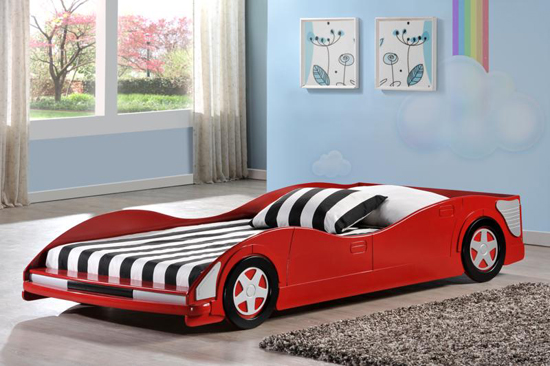The Transition From Crib to Bed

There is no specific time when you have to move a child from their cradle to a bed. The most important factor in this decision is safety. You want to make the transition before they are able to climb out of the crib themselves, so that they don’t end up hurting themselves trying to do so. This will usually happen around the age of 1 ½ – 2 ½. However you also have enough leeway with this to accommodate the child’s personal preferences.

Discovery World Furniture Merlot Twin Captain Bed
The type of bed that you move your child into will be very important. This is the first piece of “big kid” furniture that they will own, and it will have an effect on their mood, disposition, and development. You should generally opt for a small bed, twin sized or less, so that they feel comfy, cozy, and cradled safe within its folds. Later a larger bed can be purchased to transition them up as they grow.
In some cases, the eminent arrival of a new child will necessitate the move of the older sibling from their cradle to a bed. If this happens, it is important to make the change early, at least a few months before the baby is born. This is so that the moving kid does not associate the disruption with their brother or sister, creating a negative association. Rather this should be an experience that is entirely about them.
The Psychology of Change

Twin Race Car Bed
Any disruption in a small child’s life can be traumatic. They do not have any experience with anything, and so when things change, they can be scared, disturbed, and overwhelmed by it. That is why it is your job to make this experience as positive and fun as possible. Make sure that you reinforce that this is a “reward” and a mark of their development from being a baby to being a “big boy” or a “big girl.” You should also avoid doing it if they are going through any other trying experiences like potty training or giving up a pacifier.
One way to ease the transition is to have them move into a fun, novelty bed. These often consist of pieces that are painted to look like exciting objects, race cars, castles, dollhouses and the like. By engaging the child’s imagination you can help to support their creative development while also making the entire experience like a fun and thrilling story, that they get to live in each and every day.









